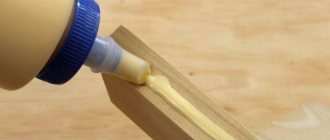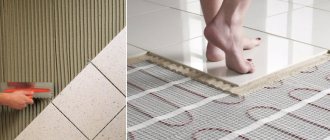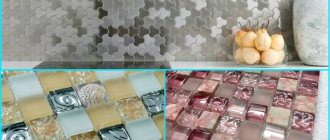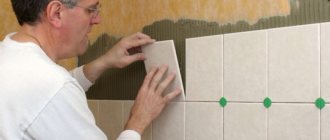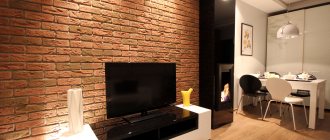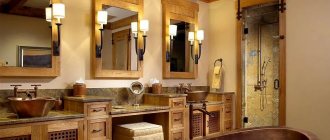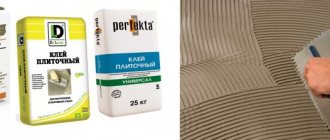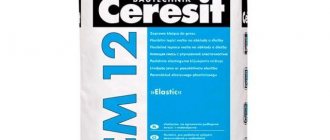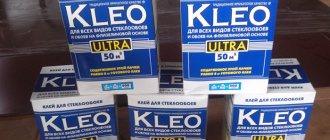When cladding the facade of a building or structure, only high-quality facade glue should be used. Such material will allow you to quickly carry out work and guarantee a durable result. Basically, adhesives are needed when carrying out insulation. After gluing work, to secure the result, mechanical methods are often used, using dowels and self-tapping screws.
Peculiarities
Facade mixtures have features unlike conventional adhesives:
- Frost resistance. The level of the indicator should be higher in cold weather conditions.
- Vapor permeability. This indicator is important for constant temperature changes.
- Flexibility. The higher this indicator, the higher the price. A high indicator is not responsible for the quality of the product. Flexibility is lower the harder the insulation material is.
- Adhesion. Affects the quality of work performed. The higher the adhesion, the longer the cladding will last.
- Allows you to glue the following materials: foam sheets, mineral wool, polyurethane boards.
Travertine
A fairly popular variety is travertine facade plaster, which imitates the natural nature of stone. Thanks to it, facade walls are highly practical, along with a spectacular appearance.
When applying such a coating, it is necessary to have both experience in such work and the appropriate skills. That is why it is most often performed by qualified specialists who have a certain specialization in the field of finishing.
The composition is based on natural stone. Italian and Russian manufacturers have achieved amazing similarity of the coating with the texture of natural material.
If we talk about the fundamental features, they include:
- The ability to create facades that are unique in appearance and have a high level of aesthetics;
- Complete safety from an environmental point of view;
- Easy application and low maintenance;
- Resistance to harmful microorganisms and the ability to “breathe”.
Thanks to this type, buildings look very impressive and can be easily tinted. If desired, it can be made both in pastel tones and in more saturated shades, which allows it to determine its special place in the interior style.
The binders in the composition allow classification into:
- Silicate with liquid glass, which does not have high strength characteristics, but has excellent vapor permeability characteristics and adaptation to atmospheric manifestations;
- Mineral based on cement or limestone. It has excellent strength and resistance to external influences. Universal. Can be used for finishing, both from the inside and from the outside.
Types of glue
Adhesive facade masses are available in two types:
- dry mixture;
- mass ready for use.
The second option is more expensive and is not used when working with large volumes. Dry mixture is an excellent option; it is prepared immediately at the construction site.
Based on the composition of the mass, they are divided into:
- Cement based. Produced with the addition of auxiliary components and fine quartz sand. Such masses have high adhesion to mineral wool and foam plastic. The connection is resistant to vibration processes and atmospheric conditions. The structure of the layer does not allow condensation to accumulate. Cement types can hide minor surface defects.
- On a polyurethane foam base. These products are resistant to low temperatures, have thermal insulation properties, and an increased degree of adhesion. The masses are produced in cylinders, which are heated at room temperature before use. The hardening time depends on the ambient temperature; the lower the temperature, the longer the glue dries. Excess should be removed immediately, since after drying, only a mechanical cleaning method is available.
View this post on Instagram
Posted by Yurii Voitko (@yuriivoitko1993) Jul 14, 2022 at 2:00 PDT
Polyurethane products
Any polyurethane adhesive is seriously different from the dry mixtures described above. They are often called “glue-foam”, “foam-glue”, because the compositions are sold in cylinders, and to use them you need a construction gun. They are used in the same way as polyurethane foam. Polyurethane adhesives for EPS are usually used for exterior applications; they have strong adhesion and are easy to use. The products dry quickly, are economical, do not react to changes in weather, and are frost-resistant.
Tytan Styro 753 GUN
Produced in 750 ml bottles, suitable even for interior work. This polystyrene adhesive is applied in thin strips, then the material is immediately applied to the wall. It can attach EPS to a base made of plaster, concrete, wood, mastic, cement, and is capable of reliably gluing sheets of expanded polystyrene together.
Adhesive foam "TechnoNIKOL"
TechnoNIKOL adhesive is widely used for fastening polystyrene slabs to foundations, walls of houses, roofs, in basements, and on floors. The gaps between the insulation boards are also sealed with glue. The adhesion of the product is high even where there is mold, high humidity, and fungus.
Glue "Penoplex" Fastfix
The product is considered effective for fastening EPS slabs to bases made of concrete, aerated concrete, brick, and ceramic blocks. Packaged in standard 750 ml bottles. It is characterized by high strength, the quality of adhesion to the base is one of the best among analogues. The adhesive is incompatible with bitumen compositions, polyethylene film, and Teflon.
How to choose the right one
Purchasing high-quality glue will allow you to securely fasten the insulation materials, without any nuances during operation. Price is not always an indicator of the quality of a product. If the instructions are not followed when installing insulating materials even with the most expensive glue, problems will arise during operation, since the increased adhesion will not be maintained.
A quality result depends on the correct purchase of raw materials.
Most often, mineral wool and polystyrene foam are used as insulation raw materials. They retain heat inside the room without letting it out. Therefore, for their installation, the adhesive must match the structure of the insulation and withstand climatic changes. If the building is located in a harsh climate where severe frosts prevail, then the adhesive mass must be frost-resistant with an increased index.
In addition to frost resistance, attention is paid to the vapor permeability indicator. It is this indicator that plays an important role in performance characteristics. The accumulation of condensation affects the durability of the building materials themselves, while the room must remain dry, without the possibility of mold and mildew forming.
An important indicator is the flexibility of the adhesive raw material. It depends on the additives in the composition (plasticizers, modifiers). This indicator ensures ease of uniform application of the mass.
The adhesive properties of the adhesive raw material characterize it as a reliable fixator of the insulating layer.
Other gluing methods
Some craftsmen try to use “homemade” methods for attaching polystyrene boards using other methods. This is not always reasonable.
Polyurethane foam
Foam is used to fasten any surface, including EPS. The cost of foam is often cheaper than similar glue in cans. But the disadvantages of this method are obvious:
- slow setting with the base - slabs lying vertically will constantly slide;
- the glue contains special adhesion-improving additives, which makes it more reliable for tearing than foam;
- polyurethane foam tends to grow in volume, and when constructing polystyrene foam this can play a bad role;
- foam peels off the wall faster than glue.
The advantage of foam is the ability to fill the seams between the slabs, so it can also be useful in installation.
Manufacturers
Among the manufacturers of facade adhesives, it is worth highlighting the following TMs:
- Ceresit CM 117. A sought-after product, as it provides a high level of adhesion, is frost- and water-resistant, and contains plasticizers that increase the level of plasticity. Also, thanks to a certain composition, it firmly fixes, which prevents the facing material from slipping. The composition does not contain toxic compounds, so the product is environmentally safe. Gluing is possible on cement, concrete, plaster bases.
- Tile adhesive prospectors plus. It is characterized by increased flexibility, ease of use, and quick fixation, which allows installation of tiles from top to bottom. The prepared solution should be used within four hours.
- Ultra Fix Winter from Weber-Vetonit. Designed for installation on the street side of the room. Available in 25 kilogram bags. Correction time up to 10 minutes. Work is carried out in the temperature range – 10 – +20 degrees. Consumption corresponds to 3–3.5 kg per m2. It is frost-resistant, 75 defrosting cycles are acceptable. The finished mass is used within two hours.
- WEBER THERM S100 winter version. Adhesive for facade mesh. Gluing is carried out at temperatures of -10 – +10 degrees. Firmly adheres insulation made of mineral wool and polystyrene foam. Has a high degree of water resistance.
- Ceresit ST 84. polyurethane-based facade adhesive. It has a low level of expansion when drying, increased adhesion to various substrates, thermal insulation, and waterproof properties. Additional mechanical fixation can be done two hours after gluing the insulation. The approximate consumption of raw materials is one cylinder per square meter.
For what purposes is this finishing material used?
- Finishing of facades and plinths of buildings, as well as repair of previously plastered surfaces as part of external work. The composition fits perfectly on concrete and brick surfaces;
- Bridge plaster, which improves the adhesion of smooth and porous concrete layers;
- Plaster over insulation. To do this, the first layer is applied directly to the material, in which the reinforcing mesh is embedded, after which everything is covered with a second layer, resulting in a durable coating;
- As an adhesive mixture for insulating buildings with polystyrene boards or mineral wool.
Important! The composition is equally suitable for both manual application and machine work.
Instructions for use
In order for the work to be successful and a long-lasting result to be ensured, it is worth following the instructions for using façade adhesives:
- The substrates must be prepared before applying the adhesive mass.
- Mixing the solution is done with clean water at room temperature (water requirements for each manufacturer are individual).
- Mixing of the mass is done with a mechanical or electric mixer at 400 rpm.
- The prepared mass must stand for 3–5 minutes to activate the properties and completely dissolve the components.
- If the air temperature is about 30 degrees, then the base is moistened before application.
- The glue is applied and spread with a notched trowel.
- Additional mechanical fastenings should be made no less than two hours after gluing the insulation boards.
- Complete drying will occur in a day.
Useful tips
When carrying out work using facade adhesives, you need to take into account some useful tips:
- Without preliminary preparation of the base, you should not apply the compound, as it will not provide the required level of adhesion and durability of installation.
- All work is carried out according to the instructions for use.
- When working, it is worth taking into account the temperature of the outside air and the compliance of the adhesive raw materials with it.
- If it is necessary to apply several layers of mass, then wait a day before each application.
- Additional mechanical fastening is not carried out earlier than two hours after applying the façade adhesive.
We recommend videos on the topic:
Options for applying facade plaster
Three main types of application technology:
- In one tone with the formation of a beautiful surface, very similar to the texture of natural stone;
- With a combination of one or more shades, formed by alternating light areas with dark ones. The surface can be “aged” if a silvered substance is used for this purpose;
- A special torn technique, when the formation of a patterned part is achieved by applying layers with different colors in a chaotic order. This way you can get a unique pattern.
If we talk about technical design, it can be textured, monolithic, or clearly imitating natural stone.
